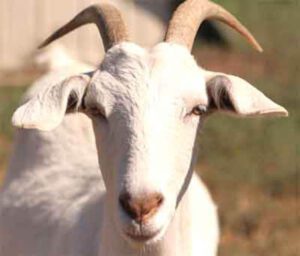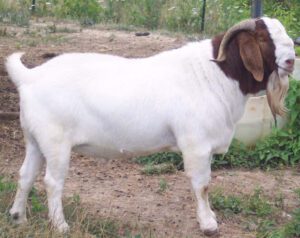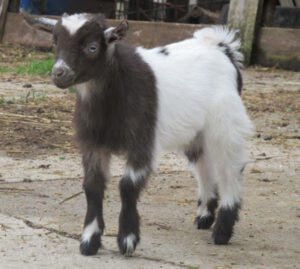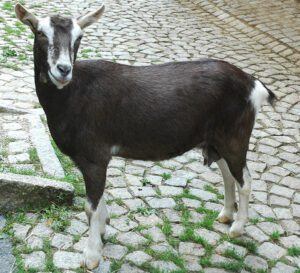The Oberhasli goat is domestic breed of goat developed in the mountains of Switzerland. It is also known as Oberhasli Brienzer or Swiss Alpine and mainly used for milk production.
Oberhasli goat derives from the sub-type of Chamois Colored goat from the Oberhasli district of the Bernese Oberland in central Switzerland. Oberhasli goats were first imported to the United States in the early 1900s. But those goats were not bred pure and the bloodlines were lost.
And purebred herds were not established and maintained until 1936. Five Chamois Colored goats were imported from Switzerland to the United States in 1936.
And all purebred Oberhasli goats in the United States descend from those goats. The breed was initially called the Swiss Alpine, and interbred with the Alpine goats of other types. But in 1977, a breeder’s association was formed and the breed name Oberhasli was adopted.
Registration records were separated from the Alpines and a herdbook established in the following year. An association of breeders was formed in about 1977 named ‘the Oberhasli Breeders of America’.
The Oberhasli goat was accepted as a breed by the American Dairy Goat Association in 1978 or 1979. There is a miniature version of this goat breed, which is called Oberian or Mini Oberhasli goat. Read more information about the Oberhasli goat below.
Oberhasli Goat Characteristics
Oberhasli goat is a medium sized animal, which is alert and vigorous in appearance. Primary the color of the Oberhasli goats is chamois. Chamois is described as: Bey – ranging from light to deep red bay, with the later most desirable.
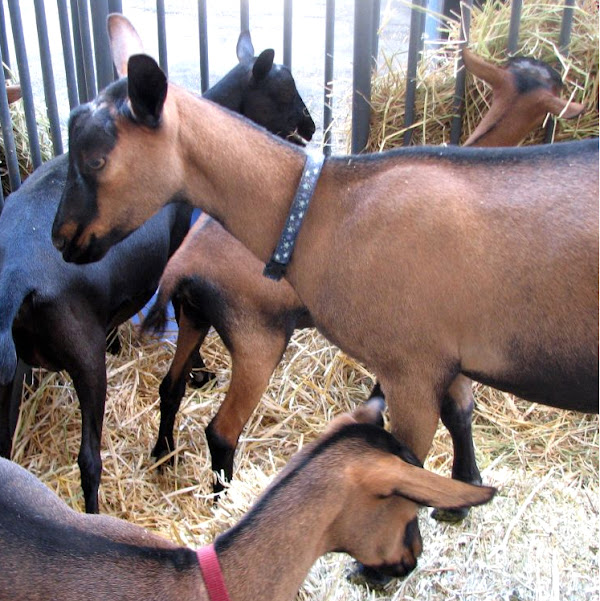
The color of the does may also be solid black, but not the bucks. There may be a few white hairs through the coat and about the ears of the Oberhasli goat. There are many black markings on their entire body.
There are two black stripes down the face from above each eye to a black muzzle. Their forehead is nearly all black, black stripes from the base of each ear coming to a point just back of the poll and continuing along the neck and back as a dorsal stripe to the tail.
Their hocks are black and legs are black below the knees. They have black belly and udder. And the ears of the Oberhasli goat are black inside and bay outside. Usually the bucks have more black on their head than the head of does.
And there are some white hair in the body of both bucks and does. But the bucks usually have more white hairs on their coat than the does.
This breed is medium in size. Bucks on average weight about 68 kg, and the does weight about 54 kg. Photo from Wikipedia.
Uses
Oberhasli goats are among the best dairy goat breeds. They are mainly kept for milk production. They are suitable for commercial dairy goat farming business.
Special Considerations
Oberhasli goat is very gentle in nature and are of very friendly behavior. It is a very active and alert animal. The does are excellent milk producers. On average, a Oberhasli doe can produce up to 2000 liters of milk per lactation.
The breed can also be good for raising as pets. However, review full breed profile of this breed in the following table.
| Breed Name | Oberhasli |
| Other Name | Also known as Oberhasli Brienzer or Swiss Alpine |
| Breed Purpose | Milk |
| Breed Size | Medium |
| Buck | Minimum 68 kg |
| Doe | Minimum 54 kg |
| Horns | No |
| Climate Tolerance | All Climates |
| Coat Color | Chamois (with black face-stripes, belly, back stripe and legs) |
| Good for Stall Fed | Not sure |
| Rarity | Common |
| Country/Place of Origin | Switzerland |

